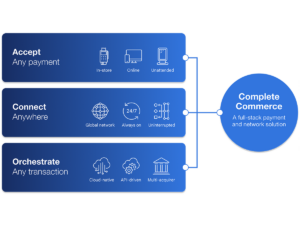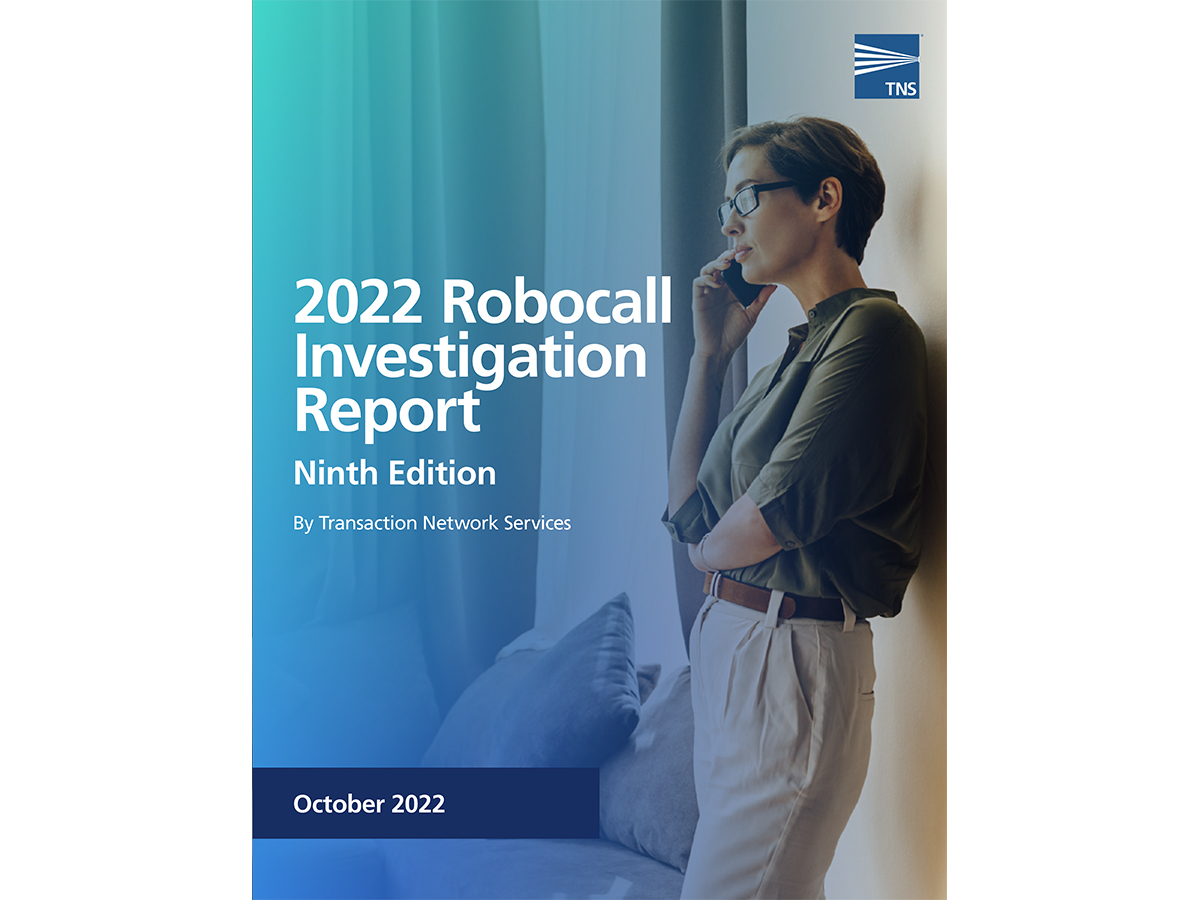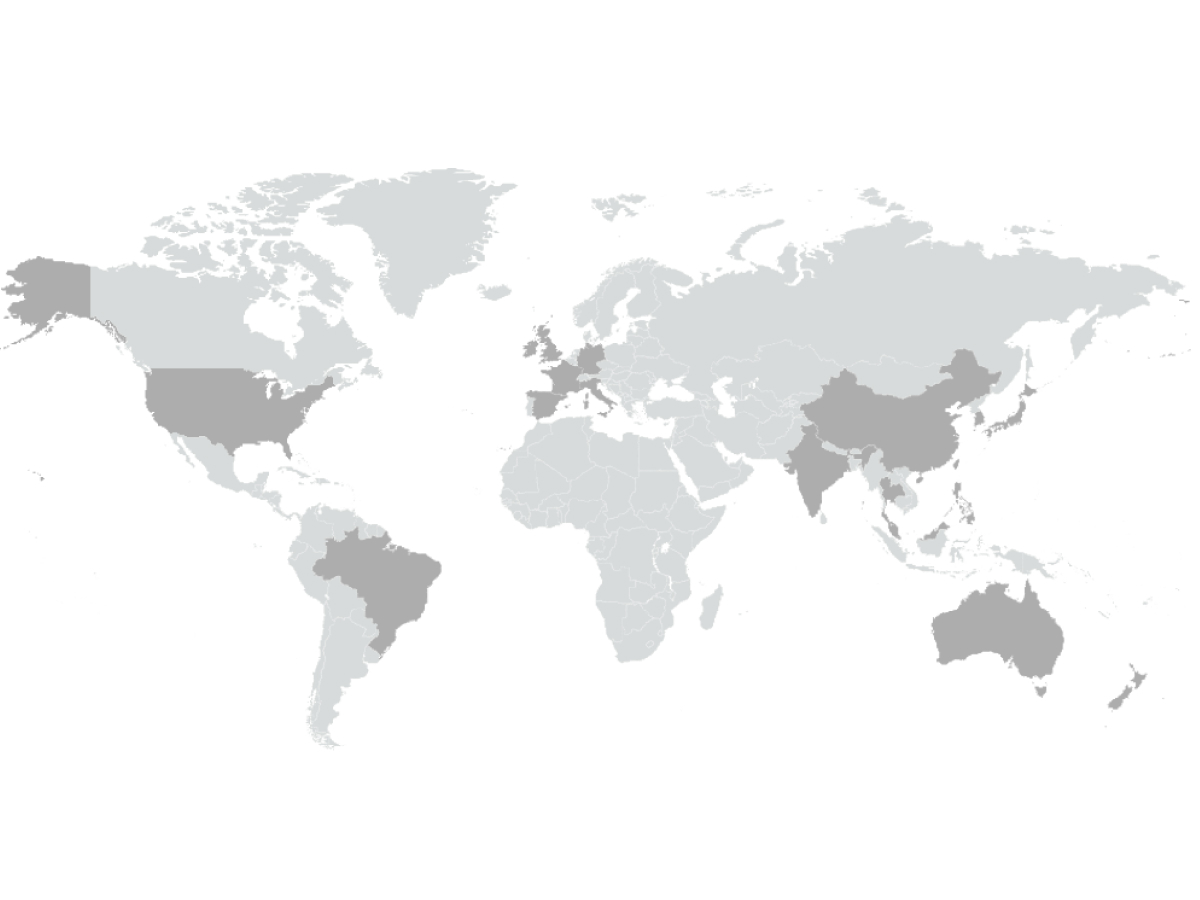TNS’ bi-annual Robocall Investigation Report finds positive results in efforts to combat robocalls, but erosion of consumer trust in voice calling is driving strong demand for branded calling
Progress by top US carriers implementing STIR/SHAKEN, aggressive regulatory enforcement efforts, and the use of advanced call analytics helped drive down robocall volume 8% in the first half of 2022 compared to the same period last year (from 37.9 billion down to 34.9 billion). However, scammers and spammers are continuing to launch robocall campaigns from smaller carrier networks – and adding robotexts to the arsenal – to evade detection.
These are among key findings from the Ninth Edition of Transaction Network Services (TNS) Robocall Investigation Report released today.
Americans received 34.9 billion unwanted robocalls over the first half of the year, but only 8% of this volume originated from the top-seven US carriers (AT&T, Lumen, Charter, Comcast, T-Mobile, UScellular and Verizon). Efforts have been made by Tier-1 carriers to meet and exceed the FCC’s call authentication framework’s requirements for mitigating robocall spoofing.
“As FCC-mandated STIR/SHAKEN implementation continues to expand beyond Tier-1 carriers, we anticipate that consumers will increasingly benefit from broad-based efforts to combat robocalls – and our Report data backs this up,” said Bill Versen, TNS’ President, Communications Market. “But the erosion of trust in voice calling suggests damage has been done, creating a market need to not only protect subscribers from robocalls, but to deliver branded calling solutions so that legitimate organizations can effectively reach consumers.”
This ninth edition of TNS’ Robocall Investigation Report includes several new insights:
- Tier-1 carriers remain a small part of the problem – but robocallers are adapting. More than 75% of inter-carrier traffic originates from Tier-1 carriers, but only 8% of unwanted robocalls in the first half of 2022 came from these Tier-1 telephone numbers (up from 5% during the same period last year). The bump may be attributable to bad actors shifting to low-volume spoofing across large Tier-1 telephone numbering resources, using a variety of scams.
- Erosion of trust in voice calling fuels demand for branded calling. The lack of consumer trust in voice calling has compelled three-quarters of Americans to never answer calls to their wireless phone if they do not recognize the number. And yet, 78% of survey respondents say they are more willing to answer the phone if the caller ID displays the logo and name of an organization they recognize. This behavior is driving strong demand for TNS Enterprise Branded Calling.
- Tier-1 carrier STIR/SHAKEN compliance driving robocall mitigation gains. More than 63% of the total wanted intercarrier calls at the end of the first half of the year were signed as legitimate, a 10% increase from the end of last year.
- VoIP originated calls are decreasing as portion of high-risk calls. Forty one percent of all high-risk calls and 81% of nuisance calls in the first half of 2022, up from 73% last year, originated from VoIP numbers. This represents the two largest sources of unwanted calls. High-risk calls saw a steep drop from 68% in 2021 with bad actors shifting back to spoofing of toll-free and wireless and wireline telephone numbers.
- Wireless phone numbers are being targeted more by robocallers. As more calls are terminating on wireless devices, the percentage of unwanted robocalls to wireless devices increased from 21% last year to 23% for the first half of 2022. Unwanted robocalls to wireline devices decreased dramatically from 48% to 30% for that same period.
- Robotexters are snowshoe spamming Americans. Consumer complaints to the FCC about unwanted robotexts have tripled since 2019, as spammers and scammers seize on disposable, text-enabled ten-digit telephone numbers that can be easily obtained through web-based services or pre-paid SIM cards. Nearly half of robotext scams during the first half of 2022 originated from bad actors using snowshoe messaging techniques, where the sender spreads their attack across multiple telephone numbers.
Click here for a copy of the 2022 TNS Robocall Investigation Report, Ninth Edition.






